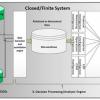Business Transformation Requires Transformational Leaders
Leadership and teaming skills are front and center in times of rapid change. Meet today’s constant disruption head on with expert guidance in leadership, business strategy, transformation, and innovation. Whether the disruption du jour is a digitally-driven upending of traditional business models, the pandemic-driven end to business as usual, or the change-driven challenge of staffing that meets your transformation plans — you’ll be prepared with cutting edge techniques and expert knowledge that enable strategic leadership.
Subscribe to Arthur D. Little's Culture & Leadership Newsletter
Insight
Jutta Eckstein and John Buck walk us through an enterprise-aware approach that helps optimize the process flow of value streams. The authors show how to apply “Open Space” and “Sociocracy” to support enterprise Agile transformation. Open Space is a technique where everyone is invited to put forward ideas that they’re passionate about; if there is enough interest in the idea people will get behind it and make it happen. Sociocracy is a form of democracy for use in organizations, building feedback mechanisms into the organizational structure itself that ensure every voice is heard. Both strategies promote enterprise awareness, increasing collaboration between people in what would normally be disparate parts of the organization and helping optimize flow as the situation evolves.
In his discussion of the five levels of a digital business ecosystem (DBE), Jaco Viljoen explores the idea that “choice is good because context counts.” The five levels, each with its own set of capabilities that build one on top of another, are: waterfall/traditional, hybrid Agile (a combination of waterfall and Agile), regular delivery, continuous delivery, and continuous exploration. The five DBEs provide insight into which process-building blocks to apply. Viljoen also discusses using a framework to achieve business agility at scale.
Matthew Ganis and Michael Ackerbauer describe how to build awesome teams. You want to be Agile (of course!) and adopt Agile practices. Awesome teams have the skills and resources to fulfill their mission and include the right mix of personalities. The authors argue that the organization is really a “team of teams” that needs a shared purpose and way of working to make the abstract concrete. According to them, awesome teams build on a common foundation based on the concept of Breakthrough Thinking/diversity of thought.
Gene Callahan has some great advice for building awesome people. Beginning with the idea of the division of labor, Callahan walks us through the history of how traditional organizations find themselves as a collection of specialists who struggle to be responsive to the changing marketplace. He then examines the need for people who are generalizing specialists (people who can collaborate effectively and learn from one another).
John Hogan provides some insights on delighting customers. He argues for a customer-focused organizational structure, with Agile teams supported by Agile leadership. Hogan describes the importance of goal setting to focus on delighting customers, supported by incremental planning and delivery to do so.
Business agility is something that emerges over time through a lot of hard work. Excelling at it requires true agility across all of IT, not just software development, as well as a disciplined organization that can leverage the IT capability. And, because the environment in which your organization operates evolves over time, and your competitors and partners also evolve, business agility proves to be a moving target in practice.
This Advisor explores the mechanics behind various decision-making models and examines the boundaries and use cases for each. It discusses the qualitative value that experience or intuition can add to data-driven quantitative analysis, thereby providing the best approach to decision making.
AI’s disruption has yet to be felt in the workplace, but there are waves of changes coming our way that will alter the way we work as well as the type of work we do.















